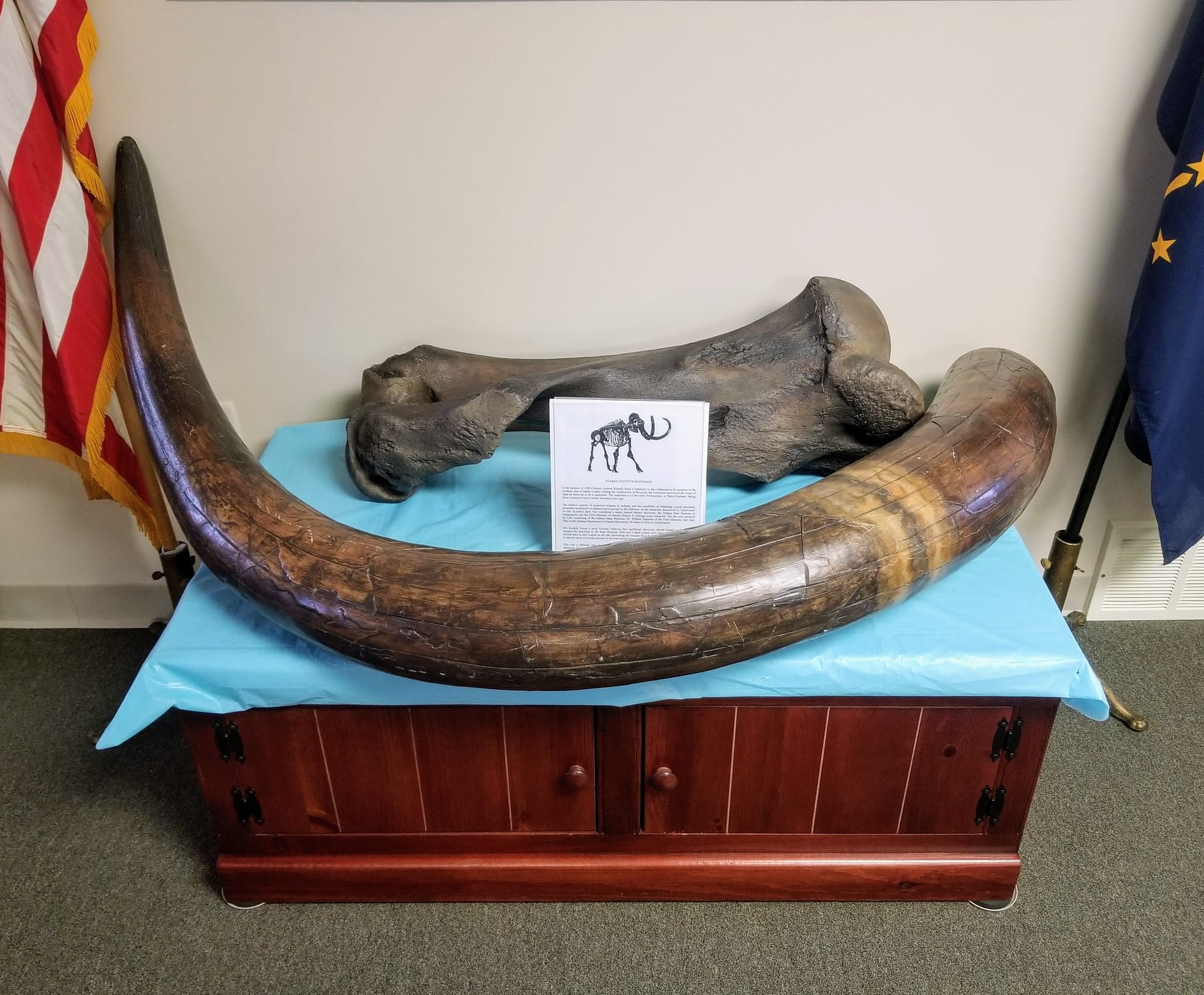Mastodont Circa 15,000 B.C.

In the summer of 1980 Andrew Kolarik, a farmer in southern Starke county, hired a contractor to dig a fish pond on his property. During the construction of the pond, the contractor uncovered the bones of what he believed to be a woolly mammoth.
Indiana State Archaeologists determined the find was actually the remains of a mastodont, of the order Proboscides, or Paleo-Elephant, dating from a period of ten to twenty thousand years ago.
The relative scarcity of mastodont remains in Indiana and the possibility of obtaining a good specimen, generated excitement in archaeological groups in the Midwest. Since the mastodont discovered or "uncovered" on Mr. Kolarik's farm was considered a major natural history discovery, the Indiana State Museum in Indianapolis and the Field Museum of Natural History in Chicago were contacted. The site was surveyed by Carl Armstrong of the Indiana State Museum, Dr. William Simpson of the Field Museum, and Gary Ellis of the Indiana Department of Natural Resources, Division of Historic Preservation.
Mr. Kolarik, being a good Hoosier, believed this significant discovery should remain in Indiana and donated the specimen to the Indiana State Museum. Ellis, with a hand-picked crew, spent several days in mid-August, 1980, on the site, excavating the remains from the bog. The excavation was fortunate to recover sixty to seventy percent of the total animal bone mass, despite the absence of the skull.
This was a difficult, very involved field project requiring detailed work, much patience, and. on-site decisions. However, the effort is worthwhile to the museum, students of natural history and the citizens of Indiana.
The mastodont tusk located in the Starke County Museum is a fiberglass replica made from a cast of the original tusk of the specimen found on the Kolarik farm. A replica of a three-foot-long upper leg bone from the same mastodont is also on display.


